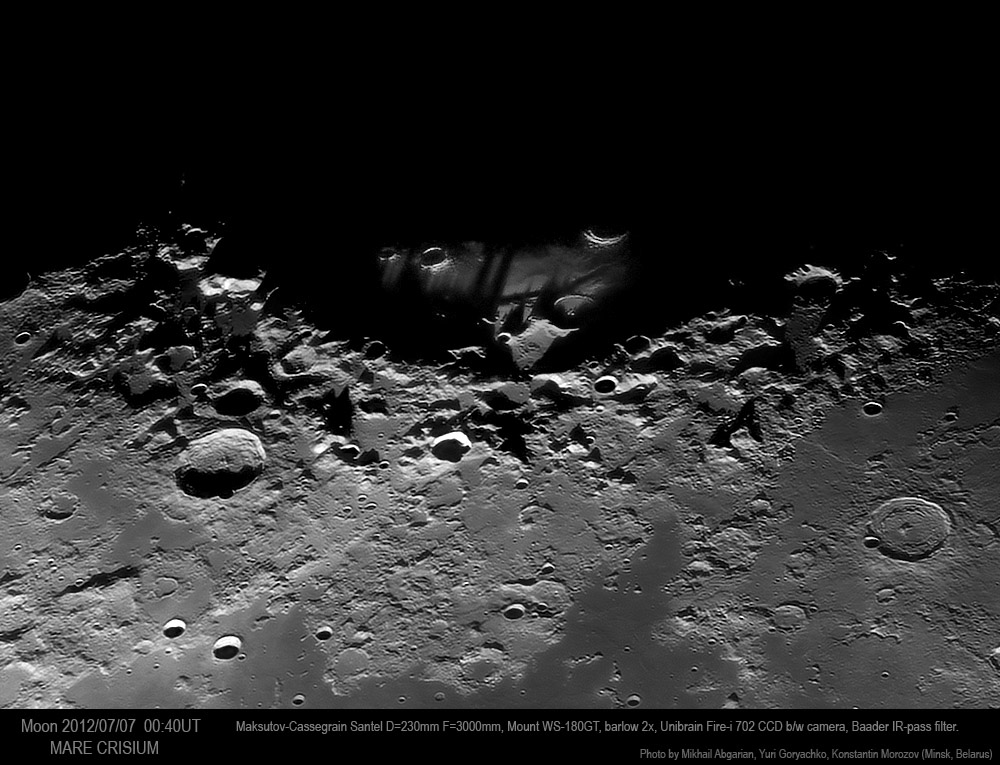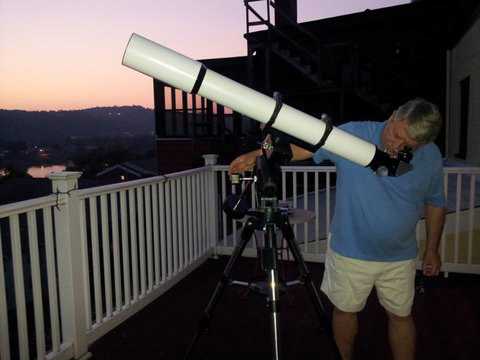Difference between revisions of "July 25, 2012"
| Line 1: | Line 1: | ||
__NOTOC__ | __NOTOC__ | ||
=Mystical Minsk Miracle= | =Mystical Minsk Miracle= | ||
| − | |||
<!-- ws:start:WikiTextHeadingRule:0:<h1> --> | <!-- ws:start:WikiTextHeadingRule:0:<h1> --> | ||
<!-- ws:start:WikiTextLocalImageRule:6:<img src="/file/view/LPOD-Jul25-12.jpg/354663886/LPOD-Jul25-12.jpg" alt="" title="" /> -->[[File:LPOD-Jul25-12.jpg|LPOD-Jul25-12.jpg]]<!-- ws:end:WikiTextLocalImageRule:6 --><br /> | <!-- ws:start:WikiTextLocalImageRule:6:<img src="/file/view/LPOD-Jul25-12.jpg/354663886/LPOD-Jul25-12.jpg" alt="" title="" /> -->[[File:LPOD-Jul25-12.jpg|LPOD-Jul25-12.jpg]]<!-- ws:end:WikiTextLocalImageRule:6 --><br /> | ||
| − | <em>image by [mailto:astronominsk@gmail.com Astronominsk], Minsk, Belarus</em><br /> | + | <em>image by [mailto:astronominsk@gmail.com" rel="nofollow Astronominsk], Minsk, Belarus</em><br /> |
<br /> | <br /> | ||
| − | This wonderful image shows that there is always something new to see on the Moon. This small excerpt from a large [http://www.astronominsk.org/Moon/Moon2012/Moon_20120707_en.htm mosaic]by Mikhail, Yuri and Konstantin captivates with its low lighting, great tonal quality, and high resolution. The vee-shaped shadow, with a cone of brightness radiating from the low spot of Crisium's western rim is like a giant searchlight illuminating the mare floor. Move your eyes to the right of the long shadows and notice the narrow one cast by the Oppel mare ridge. The sounder on Apollo 15 determined that this ridge is a fault with the east side (toward the center of the mare) bring lower than the bench closer to the rim. You can confirm what Apollo found and your eyes tell you by using the QuickMap Path tool to determine that the ridge is about 75 m high, and the terrain to the east is 150 to 300 m lower than the lavas to the west. If you know [http://the-moon.wikispaces.com/O%27Neill%27s+Bridge O'Neill's Bridge] you can almost see it here, but the center part must have collapsed to explain the gap. Detecting the Bridge would be a very difficult telescopic observation. I never realized before that this entrance to Crisium is flanked by two similarly large craters, Macrobius to the north (left) and Taruntius to the south. Ironically, each has a smaller crater breaking its rim. The interiors are instructive. Macrobius is a normal youngish complex crater with central peak and terraces. One QuickMap traverse across it shows it to be about 64 km wide and 4 km deep. Taruntius is 58 km wide with depths ranging from 0.5 to 1.50 km, and in some places the circular ridge is higher than the rim. Taruntius is a floor-fractured crater - it has been colonized by magma that rose up under it, lifting the floor and creating the ring ridges. Notice the ridge that crosses the patch of mare above and left of Taruntius. It must be a boundary for the lava to the left of the ridge is highly textured and to the right it looks smooth. <br /> | + | This wonderful image shows that there is always something new to see on the Moon. This small excerpt from a large [http://www.astronominsk.org/Moon/Moon2012/Moon_20120707_en.htm" rel="nofollow mosaic]by Mikhail, Yuri and Konstantin captivates with its low lighting, great tonal quality, and high resolution. The vee-shaped shadow, with a cone of brightness radiating from the low spot of Crisium's western rim is like a giant searchlight illuminating the mare floor. Move your eyes to the right of the long shadows and notice the narrow one cast by the Oppel mare ridge. The sounder on Apollo 15 determined that this ridge is a fault with the east side (toward the center of the mare) bring lower than the bench closer to the rim. You can confirm what Apollo found and your eyes tell you by using the QuickMap Path tool to determine that the ridge is about 75 m high, and the terrain to the east is 150 to 300 m lower than the lavas to the west. If you know [http://the-moon.wikispaces.com/O%27Neill%27s+Bridge O'Neill's Bridge] you can almost see it here, but the center part must have collapsed to explain the gap. Detecting the Bridge would be a very difficult telescopic observation. I never realized before that this entrance to Crisium is flanked by two similarly large craters, Macrobius to the north (left) and Taruntius to the south. Ironically, each has a smaller crater breaking its rim. The interiors are instructive. Macrobius is a normal youngish complex crater with central peak and terraces. One QuickMap traverse across it shows it to be about 64 km wide and 4 km deep. Taruntius is 58 km wide with depths ranging from 0.5 to 1.50 km, and in some places the circular ridge is higher than the rim. Taruntius is a floor-fractured crater - it has been colonized by magma that rose up under it, lifting the floor and creating the ring ridges. Notice the ridge that crosses the patch of mare above and left of Taruntius. It must be a boundary for the lava to the left of the ridge is highly textured and to the right it looks smooth. <br /> |
<br /> | <br /> | ||
| − | <em>[mailto:tychocrater@yahoo.com Chuck Wood]</em><br /> | + | <em>[mailto:tychocrater@yahoo.com" rel="nofollow Chuck Wood]</em><br /> |
PS - Yuri said this view looked mystical; I just thought it was another Minsk miracle.<br /> | PS - Yuri said this view looked mystical; I just thought it was another Minsk miracle.<br /> | ||
<br /> | <br /> | ||
Revision as of 21:33, 4 January 2015
Mystical Minsk Miracle

image by " rel="nofollow Astronominsk, Minsk, Belarus
This wonderful image shows that there is always something new to see on the Moon. This small excerpt from a large " rel="nofollow mosaicby Mikhail, Yuri and Konstantin captivates with its low lighting, great tonal quality, and high resolution. The vee-shaped shadow, with a cone of brightness radiating from the low spot of Crisium's western rim is like a giant searchlight illuminating the mare floor. Move your eyes to the right of the long shadows and notice the narrow one cast by the Oppel mare ridge. The sounder on Apollo 15 determined that this ridge is a fault with the east side (toward the center of the mare) bring lower than the bench closer to the rim. You can confirm what Apollo found and your eyes tell you by using the QuickMap Path tool to determine that the ridge is about 75 m high, and the terrain to the east is 150 to 300 m lower than the lavas to the west. If you know O'Neill's Bridge you can almost see it here, but the center part must have collapsed to explain the gap. Detecting the Bridge would be a very difficult telescopic observation. I never realized before that this entrance to Crisium is flanked by two similarly large craters, Macrobius to the north (left) and Taruntius to the south. Ironically, each has a smaller crater breaking its rim. The interiors are instructive. Macrobius is a normal youngish complex crater with central peak and terraces. One QuickMap traverse across it shows it to be about 64 km wide and 4 km deep. Taruntius is 58 km wide with depths ranging from 0.5 to 1.50 km, and in some places the circular ridge is higher than the rim. Taruntius is a floor-fractured crater - it has been colonized by magma that rose up under it, lifting the floor and creating the ring ridges. Notice the ridge that crosses the patch of mare above and left of Taruntius. It must be a boundary for the lava to the left of the ridge is highly textured and to the right it looks smooth.
" rel="nofollow Chuck Wood
PS - Yuri said this view looked mystical; I just thought it was another Minsk miracle.
Related Links
Rükl plate 26

Had a clear night to observe with my new 4" f/11 Astro Telescope - it is very sharp and high contrast.



